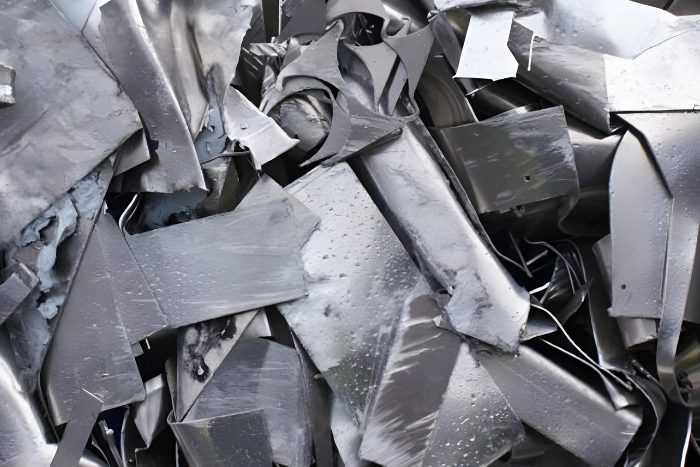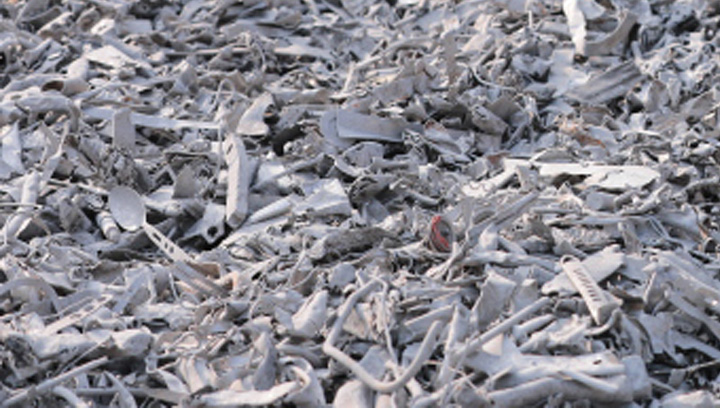We sort stainless steel scrap of SS304 grade from Zurik and Zorba. Since this is in the shredded form, it has a high bulk density, and thus, is ideal for induction furnaces. It can be used in other kinds of furnaces as well. SS 304 is widely used in a variety of applications.
Stainless Steel Recycling Overview
Typically, stainless steel recycling falls into 2 primary categories: reclaimed scrap and industrial scrap.
Reclaimed scrap, on the one hand, is made from previously used finished goods. Reclaimed scrap would include, for instance, used or recycle stainless steel from an old building pipe.
Conversely, surplus stainless steel trimmings or scraps that remain after the manufacturing process are referred to as industrial scrap. A manufacturing facility or construction site will frequently have mountains of leftover stainless steel pieces. These can be delivered as industrial scrap to stainless steel metal recycling centers.
Upon arrival at a stainless steel scrap metal recycling facility, the stainless steel undergoes a precise process to be broken down and refined by the recyclers. The scrap is first divided into categories. After that, it is shredded, processed and then refined.
This procedure guarantees that all impurities are eliminated and the steel is completely broken down.


Benefits Of Recycling Stainless Steel
The advantages of recycling stainless steel are obvious: it saves money and is beneficial to the environment by making effective use of raw materials for manufacturing. Because recycling stainless steel is easily possible, it helps saves energy than producing new metal. Because recycling stainless steel scrap is less expensive than buying new steel, many businesses do so.
Stainless steel is valuable enough to the ss scrap supplier even with its low value-to-weight ratio. Due to the massive volume of stainless steel items are employed, many firms produce enough industrial scrap to make a sizable profit. Additionally, because stainless scrap metal is so versatile and in high demand, recyclers are constantly willing to buy scrap stainless steel.
Stainless steel comes in a variety of forms and is always composed of chromium and nickel, with the possibility of other important metals such as tungsten, vanadium, titanium, or molybdenum. More of these alloying elements are present in grades that are more valuable than recyclers.
Why Choose Us?

0+ Years of experience

0+ Dedicated Staff

0+ Satisfied Customers
Industries We Serve
We serve a wide range of industries, including aerospace, automotive, construction, chemical, electrical, marine, oil, and petroleum. our stainless steel are the preferred choice for businesses that value quality, reliability, and innovation.

Aerospace

Automotive

Chemical

Construction

Electrical

Marine

Oil

Petroleum
Scrap your expenses, not your goals and we will be happy to assist you further.
Testimonials
Our Customers
Our lineup of customers reads like a who’s who of the automotive and engineering industries of India. We can proudly claim among our clients the leading lights of India like Maruti Suzuki, Honda Car, Toyota, Hyundai, Hero Moto Corp, Honda Motorcycle and Scooter, Yamaha, Bajaj, Royal Enfield, Sunbeam, Rockman, Ahresty, and many others. If we have managed to get their business and if we have sustained it, we can say that such demanding clients are more than fully satisfied with all aspects of our services. We are here to serve, innovate, and help clients prosper.

Frequently Asked Questions
What is the full form of SS scrap?
SS scrap stands for Stainless Steel scrap.
Can 304 stainless steel be recycled?
Yes, 304 stainless steel can be recycled. Stainless steel is highly recyclable, and the recycling process helps conserve natural resources.
What is 304 stainless steel scrap?
304 stainless steel scrap refers to discarded or leftover material of the alloy grade 304. It can include items like pipes, sheets, or other forms made from 304 stainless steel.
What metal is stainless steel?
Stainless steel is not a single metal but an alloy composed mainly of iron, with chromium as a key component. The chromium content provides corrosion resistance, making it “stainless.” Other elements like nickel, molybdenum, and carbon may also be present.







